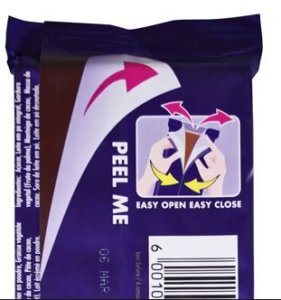Cold Seal Adhesives (Complications)

March 25, 2019
In part 3, we finish our Blog Series for Covering Cold Seal Adhesives, by discussing common cold seal adhesive complications and the impact they can have on overall efficiencies. We will also gain insight into how and why these problems are caused.
Common Cold Seal Adhesive Problems:
- Blocking
- Scumming
- Oxidation
- Under-stirring
Blocking
Blocking takes place when either the cold seal adhesive transfers to the opposing surface during unwinding and/or when the reel is difficult to separate – also referred to as high cling or poor resistance. Issues that cause blocking may include the wrong release film/lacquer, excessive winding tension, under-stirring of the adhesive, and so on.
Scumming
Scumming is often referred to as ghosting or streaking. This complication can cause production line issues and occurs when the cold seal adhesive continues to trail at the end of the cold seal, resulting in excess adhesive usage. Poor adhesion to the base film and incorrect adhesive grade for the application are common causes of scumming.
Oxidation
The loss of an adhesive seal’s internal stress results in oxidation of a cold seal application. Exposure to high temperatures or direct sunlight right after conversation is often the culprit of this cold seal complication.
Under-stirring
Under-stirring, as it states, is a common problem that occurs when the cold seal adhesive was insufficiently stirred prior to use. Under-stirring complications generally impact the desired performance level.
Partnering with the right packaging and cold seal supplier can help drastically reduce your company’s chances of encountering cold seal complications. Chat with Kendall’s technical engineers about a product evaluation and the potential use of cold seal adhesive solutions for your company’s needs here.